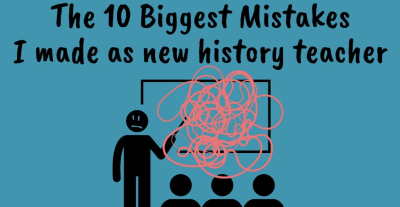Kelsey Ludeman has over 15 years of experience as an elementary teacher, a museum curriculum coordinator, a university student success coach, and a content editor and strategist. Kelsey strives to connect people and create resources to benefit educators, students, and families everywhere.
Read on as Kelsey dives into the ins and outs of creating the ideal ambiance in your classroom.
We are a reflection of our environment, and when we are also the creator of it, we hold the power to craft a space that enhances and elevates our existence in it.
When organizing and decorating our classroom each school year, we take care to design a space that upholds both form and function. Dive deeper into the subtleties that impact our students, and our own experiences and interactions throughout the day.
Light
Lighting is a complex concept. For utilitarian purposes, any source of light with do. However, when considering all of the integral ways that light affects us, the decision becomes much more intricate. The lighting of schools is organized on a large-scale, budget-driven agenda.
The solution to this fluorescent conundrum? Lamps. Turning off the overhead lights in your classroom at various times throughout the day allows students and teachers alike, to absorb the gentle calm that lamp light creates. Choosing soft, warm-toned light bulbs is the finishing touch for this ambient space.
Space
Furniture placement is a well-studied art form, practiced over centuries. Whether driven by aesthetics, utility, or even energetically through concepts like Feng Shui, there is an ideal design for every space. Adding comfortable lounging areas creates a warm, homey feel that fosters feelings of safety and happiness. Tiny touches like battery-operated candles on desks or festive string lights on walls can turn a mundane task into a whimsical and imaginative time.
Sound
Existing in a shared space involves absorbing sound energy from multiple sources; the humming of the air conditioning unit, the whispering of classmates, and the clicking of keyboards. Awareness of the noises in our environment can help guide us to create sounds that tap into the desired emotion.
Playing music and sound frequencies is an ideal method for eliciting specific responses. Soft, non-vocal classical and meditative music is ideal for focus and calm energy, lively jazz helps elevate moods and increase productivity. For the ultimate peaceful zen, the soft low-frequency sound called Brown Music is perfect for after-recess cool-downs or independent reading and writing times.
Scent
Fragrance plays a large role in our perception of an environment; the aroma of cafeteria pizza wafting through the hallway, the post-recess musk, the over-perfumed adult … With so many preexisting odors already present in our world, we need to be mindful of the additional scents we choose to add.
When selecting artificial scents, like plug-ins, candles, or sprays, ask yourself what your goal is. Do you want to calm your class or energize them? Are you choosing a scent because you like it or because it will be pleasant for the kids? And, just like most things in life, always remember, that less is more.
Feel
Being too hot or too cold makes it difficult for anyone to feel comfortable. Although most classrooms do not offer climate control to the teacher, we can encourage our students to identify and meet their own needs. Demonstrate self-check-ins throughout the day for students to ask themselves how they are feeling and how this impacts their wardrobe choices each day.
The same strategy should be used to encourage students to monitor their hunger and thirst levels throughout the day. Teaching self-awareness and self-care skills is a gift you can give to your kids that will last them a lifetime.
Energy
Everything is energy. Every piece of our environment and every person in it affects how we feel and think. Creating a physical space that fosters the thoughts and emotions we want to see from ourselves and our class, and having a mindset and mood that supports these vibes, is the key.









